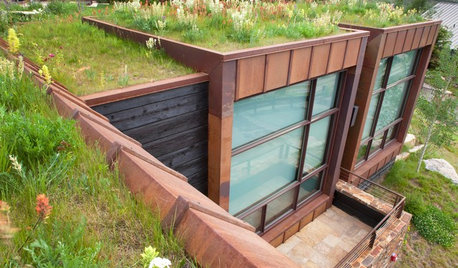nitrogen deficiency in gritty mix?
howelbama
12 years ago
Related Stories

FARM YOUR YARDHow to Grow Vegetables in Containers
Get glorious vegetables and fruits on your patio with a pro’s guidance — including his personal recipe for potting mix
Full Story
GARDENING GUIDESWhat's Wrong With My Plant? Leaves Often Hold the Clues
Learn how to identify common plant ailments by reading their leaves
Full Story
GARDENING GUIDESGarden Myths to Debunk as You Dig This Fall and Rest Over Winter
Termites hate wood mulch, don’t amend soil for trees, avoid gravel in planters — and more nuggets of garden wisdom
Full Story
GARDENING GUIDESHow to Keep Your Citrus Trees Well Fed and Healthy
Ripe for some citrus fertilizer know-how? This mini guide will help your lemon, orange and grapefruit trees flourish
Full Story
PETS6 Ways to Help Your Dog and Landscape Play Nicely Together
Keep your prized plantings intact and your dog happy too, with this wisdom from an expert gardener and dog guardian
Full Story
GARDENING GUIDES5 Great Grasses for a New Lawn
Learn about maintenance, wear tolerance, ideal climate and more for these top turf choices to pick the right one for you
Full Story
EDIBLE GARDENSGarden BFFs? Why Your Vegetables Are Begging for Companion Plants
Foster friendships among plants for protection from pests, pollination support and color camaraderie
Full Story
GREEN BUILDING6 Green-Roof Myths, Busted
Leaky, costly, a pain to maintain ... nope, nope and nope. Get the truth about living roofs and see examples from simple to elaborate
Full Story
MOST POPULARHow to Start a Cool-Season Vegetable Garden
Late summer and late winter are good times to plan and plant cool-season crops like salad greens, spinach, beets, carrots and peas
Full Story
GARDENING GUIDESHow to Switch to an Organic Landscape Plan
Ditch the chemicals for a naturally beautiful lawn and garden, using living fertilizers and other nontoxic treatments
Full Story






Joe1980
howelbamaOriginal Author
Related Professionals
Redondo Beach Landscape Architects & Landscape Designers · Vernon Hills Landscape Architects & Landscape Designers · Peabody Landscape Contractors · Fort Myers Landscape Contractors · Hendersonville Landscape Contractors · Lemont Landscape Contractors · Compton Solar Energy Systems · Los Angeles Solar Energy Systems · Whitney Solar Energy Systems · Arroyo Grande Window Contractors · Greenburgh Window Contractors · Northbridge Window Contractors · Santa Cruz Window Contractors · Canby Fence Contractors · Palo Alto Fence Contractorscalistoga_al ca 15 usda 9
howelbamaOriginal Author
Joe1980
howelbamaOriginal Author
meyermike_1micha
tapla (mid-Michigan, USDA z5b-6a)
howelbamaOriginal Author
emgardener
tapla (mid-Michigan, USDA z5b-6a)
meyermike_1micha
howelbamaOriginal Author
emgardener
Joe1980
meyermike_1micha
mikedavid00
mikedavid00
greenman28 NorCal 7b/8a
Joe1980
tapla (mid-Michigan, USDA z5b-6a)
howelbamaOriginal Author
ykerzner
tapla (mid-Michigan, USDA z5b-6a)
Joe1980
greenman28 NorCal 7b/8a